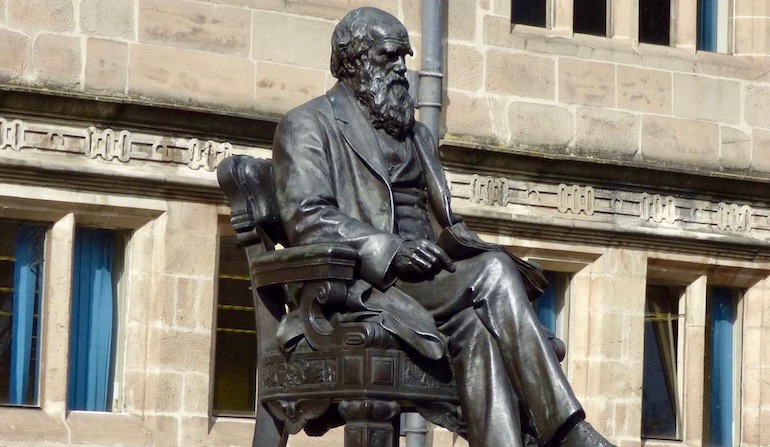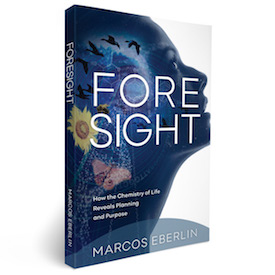 Evolution
Evolution
Game of Thrones: As Darwinism Dissolves, Top Evolutionists Scramble for a Successor

If you ask your typical garden variety evolutionist, he will tell you that all is well in the land of Darwinia. But if you look behind the right curtains, you find that some highly placed, mainstream evolutionary biologists concede that neo-Darwinism is in deep crisis. They acknowledge its imminent fall even as they cling to the hope that some purely blind, materialistic version of evolution can be cobbled together to replace it.
Such thinking was front and center at a recent University of Cambridge event, held April 1 to 4 on the campus of Churchill College. Entitled “Evolution Evolving,” the meeting sought to encourage novel thinking about evolution, starting from the premise that existing textbook theory fails to explain many of the most interesting and important phenomena in biology.
A 2016 meeting of the Royal Society of London, which included many distinguished evolutionists, struck a similar note. Such recognition is significant, since no one bothers to look for a new theory if the one they already have is doing its job.
Pretenders to the Throne

The various new proposals include punctuated equilibrium, neutral evolution, evolutionary developmental biology, self-organization, epigenetic inheritance, and natural genetic engineering. Big claims are made for each of these variants and other versions of blind evolution. But in the end those claims — while undoubtedly believed sincerely by their proponents — have little more substance than a bluff. Each has serious shortcomings as a substitute for foresight and planning with a purpose.
Punctuated equilibrium, for example, attempts to explain why we see few transitional fossils in the fossil record from one animal form to a fundamentally different animal form. But the theory offers no credible mechanism for the geologically rapid appearances that it posits. Indeed, whatever challenges traditional neo-Darwinism faces in this regard, punctuated equilibrium faces them in an intensified way, since it has less time to build new forms.
Neutral evolution de-emphasizes natural selection and focuses on mutations that, at least for a long time, would have been neutral or even deleterious for fitness. The idea is that such mutations might predominate in small populations. The benefit of this approach is that evolutionists no longer have to envision a series of functionally advantageous steps from some starting point to the evolution of some new molecular machine, organ, or organism.
But the benefit comes at an enormous cost, a cost its proponents tend to overlook.
Neutral Evolution’s Shark-Free Pool
In his book Darwin’s Doubt, Stephen Meyer — in discussing work on neutral evolution by Michael Lynch and Adam Abegg — explains with an illustration of a man dropped into a vast but happily predator-free body of water. The lack of any predators in the analogy mirrors neutral evolution’s de-emphasis on natural selection. The man in the water just has to swim to a ladder somewhere in that vast body of water and climb out. The catch: He’s blindfolded and has no idea where the ladder is.
Now, as Meyer notes, if in estimating how long it would take him to reach the ladder you calculated a fairly direct line between man and ladder, you’d generate “a fantastically optimistic estimate of the severity of the problem facing our unfortunate swimmer.” The reason: A straight line obscures the key problem the swimmer faces, namely that he has no clue where the ladder is, nor any way to gauge whether he’s getting closer to or further from the ladder at any given moment.
According to Meyer, therefore, “any realistic estimate of how long it will actually take him to swim to the ladder — as opposed to an estimate of the theoretically fastest route possible — must take into account his probably aimless wandering, fits and starts, swimming in circles and drifting in various directions.”
How does the analogy map onto neutral evolution? “Similarly Lynch and Abegg fail to reckon in their calculation on the random, undirected, and, literally, aimless nature of the mechanism that they propose,” Meyer explains.
Instead, they mistakenly assume that neutral processes of evolution will make a beeline for some specific complex adaption. In fact, these processes will — in all probability — also wander aimlessly in a vast sequence space of neutral, functionless possibilities with nothing to direct them, or preserve them in any forward progress they happen to make, toward the rare and isolated islands of function represented by complex adaptations.
The takeaway, according to Meyer: “Lynch vastly underestimates the waiting times required to generate complex adaptations and, therefore, fails to solve the problem of the origin of genes and proteins or any other complex adaptation.”
A Mutant Fly in the Evolutionary Ointment
There is another problem. Evolution tends to innovate via random mutations that break things rather than by making something new, devolutionary breaks that lead to niche advantages. Michael Behe explores this pattern in his book Darwin Devolves. No new molecular machinery is built in such cases, and it’s precisely the origin of new molecular machinery and information that any evolutionary account of the diversification of life needs to account for, neutral or otherwise.
The other alternative evolutionary proposals face similarly devastating shortcomings. What they all lack is the secret sauce in every great engineering success — foresight, ingenuity and planning with a purpose in mind.
We must applaud the search for a replacement to neo-Darwinism. Despite all the grand claims, it has failed to explain the origin of new form. But if origins biology’s quest for answers is to be guided by evidence rather than by a dogmatic rule, we would do well to have both material and intelligent causes in our investigative toolkit.
Dr. Eberlin is a member of the Brazilian Academy of Sciences, winner of the prestigious Thomson Medal (2016), and former president of the International Mass Spectrometry Society. Eberlin has published close to 1,000 scientific articles and is author of the new book Foresight: How the Chemistry of Life Reveals Planning and Purpose, from which this essay was adapted.
